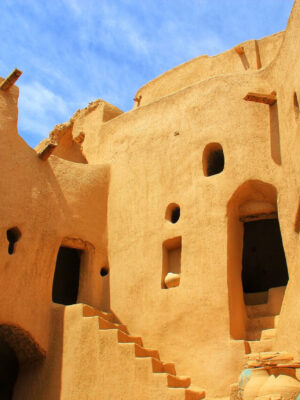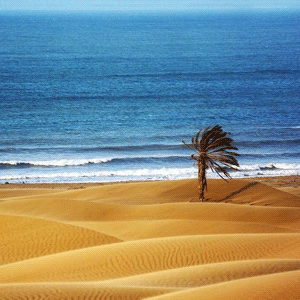Hyrcanian Forests
Hyrcanian forests form a distinct forested compact group of mountains that extend 850 km along the southern coast of the Caspian Sea, from south-eastern Azerbaijan eastwards to the Golestan province in Iran. The origins of these broad-leaved forests date back 25 to 50 million years, when they covered most of this Northern Temperate region.
There is exceptional biodiversity in the Hyrcanian region, which only covers 7% of the country, including 44% of the vascular plants known in Iran. The fauna includes180 species of birds usually found in broad-leaved temperate forests and 58 mammal species including the famed Persian Leopard, the threatened Wild Goat, Caracal, Brown Bear, Jungle Cat, Red Deer, and Eurasian Otter.

The property features 15 continuous component parts shared across the three provinces of Gilan, Mazandaran and Golestan that exhibit the various stages and features of Hyrcanian forest ecosystems. These ancient broad-leaved forests were much more extensive in the past, which receded during periods of glaciation and later extended under more moderate climatic conditions. The Hyrcanian region’s many relict, endangered, and regionally and locally endemic species of flora are significant additions to its ecological value.
Hyrcanian Forests
Hyrcanian forests form a distinct forested compact group of mountains that extend 850 km along the southern coast of the Caspian Sea, from south-eastern Azerbaijan eastwards to the Golestan province in Iran. The origins of these broad-leaved forests date back 25 to 50 million years, when they covered most of this Northern Temperate region.
There is exceptional biodiversity in the Hyrcanian region, which only covers 7% of the country, including 44% of the vascular plants known in Iran. The fauna includes180 species of birds usually found in broad-leaved temperate forests and 58 mammal species including the famed Persian Leopard, the threatened Wild Goat, Caracal, Brown Bear, Jungle Cat, Red Deer, and Eurasian Otter.

The property features 15 continuous component parts shared across the three provinces of Gilan, Mazandaran and Golestan that exhibit the various stages and features of Hyrcanian forest ecosystems. These ancient broad-leaved forests were much more extensive in the past, which receded during periods of glaciation and later extended under more moderate climatic conditions. The Hyrcanian region’s many relict, endangered, and regionally and locally endemic species of flora are significant additions to its ecological value.





















